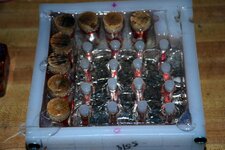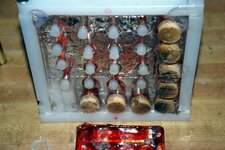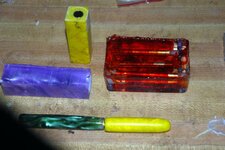I have to disagree with one portion of NewLondon88's post above...forget the Alumilite direction on adding the dye to the A side before adding the B. Alumilite is supposed to be changing their directions the next time they have dye bottles printed. I have helped a lot of folks with problems they are having with Alumilite and the #1 reason for failure for newbies by far is they are not getting it mixed thoroughly enough. One huge advantage of mixing A&B BEFORE adding the color is that you can tell when you have it completely mixed. When you first add the 2 parts together, they will look cloudy and streaky. When the resin is thoroughly mixed, it will become absolutely clear with no streaks. That is why I always recommend clear cups too. It lets you see into the resin as you mix. After it is completely mixed, then add your dye. Doing it this way will guarantee success and accurate color. If you add the dye to the A side and then add the B, you will not be able to see this transformation and you are just guessing at when you have it mixed enough. With experience, that is fine but just starting out, you are likely to have issues with under mixing.
Alumilite says to add the dye to A then add the B because the carrier for the dye is A based. If you were to add a bunch of dye, then you could skew your ratio a little and affect you mix. However, as said above Alumilite dye is so concentrated that it take so little that it will not mess up your ratio at all.
I transfer my dye into empty CA bottles that you can get from Monty. This makes a built in dropper and makes the dye much easier to handle. Then I add 1 drop of dye per ounce of mixed resin and have very strong, beautiful colors.



